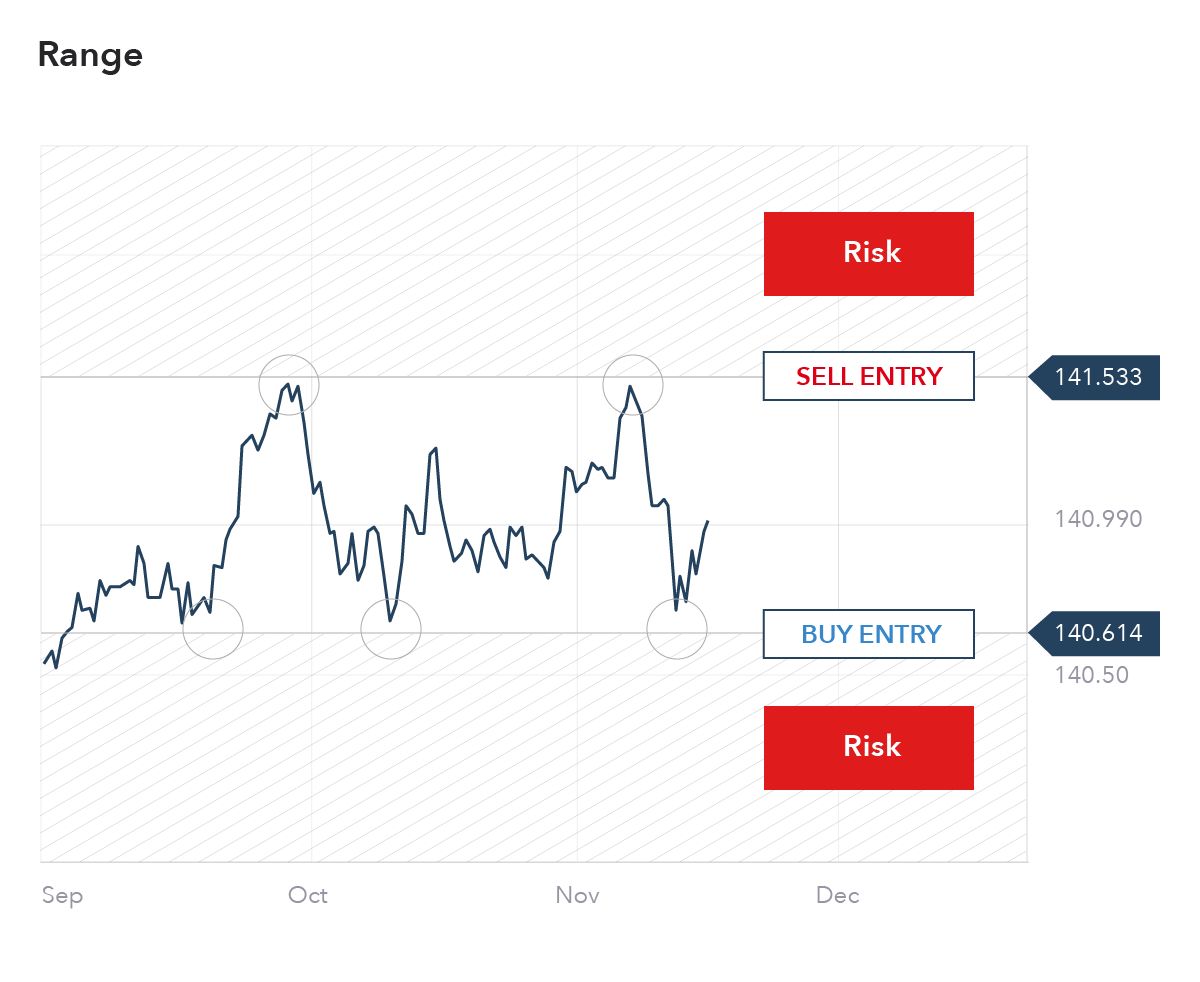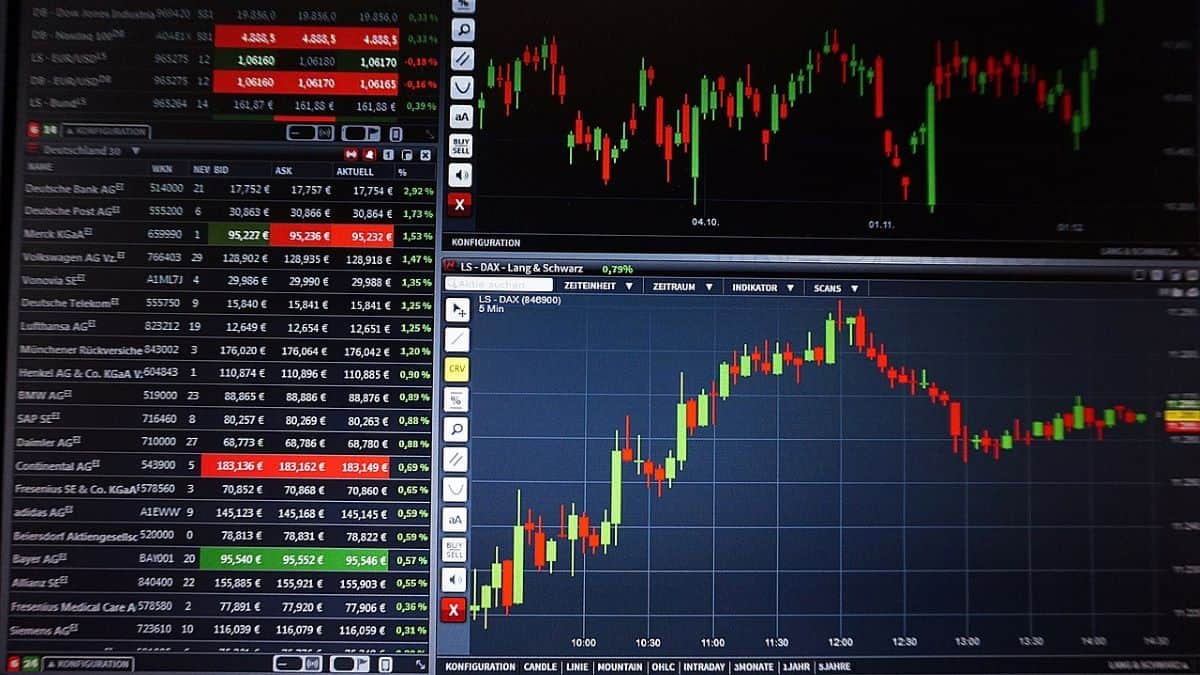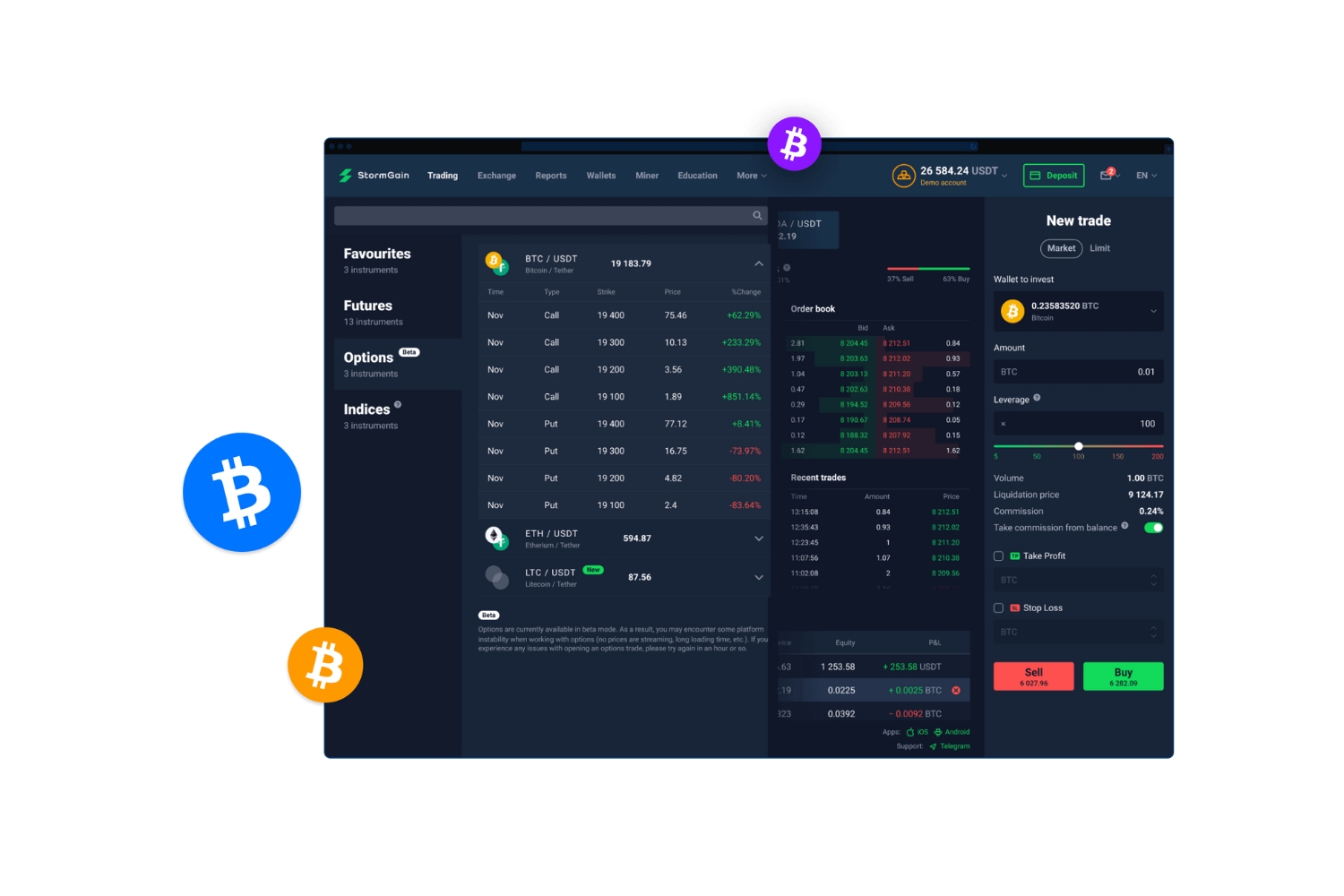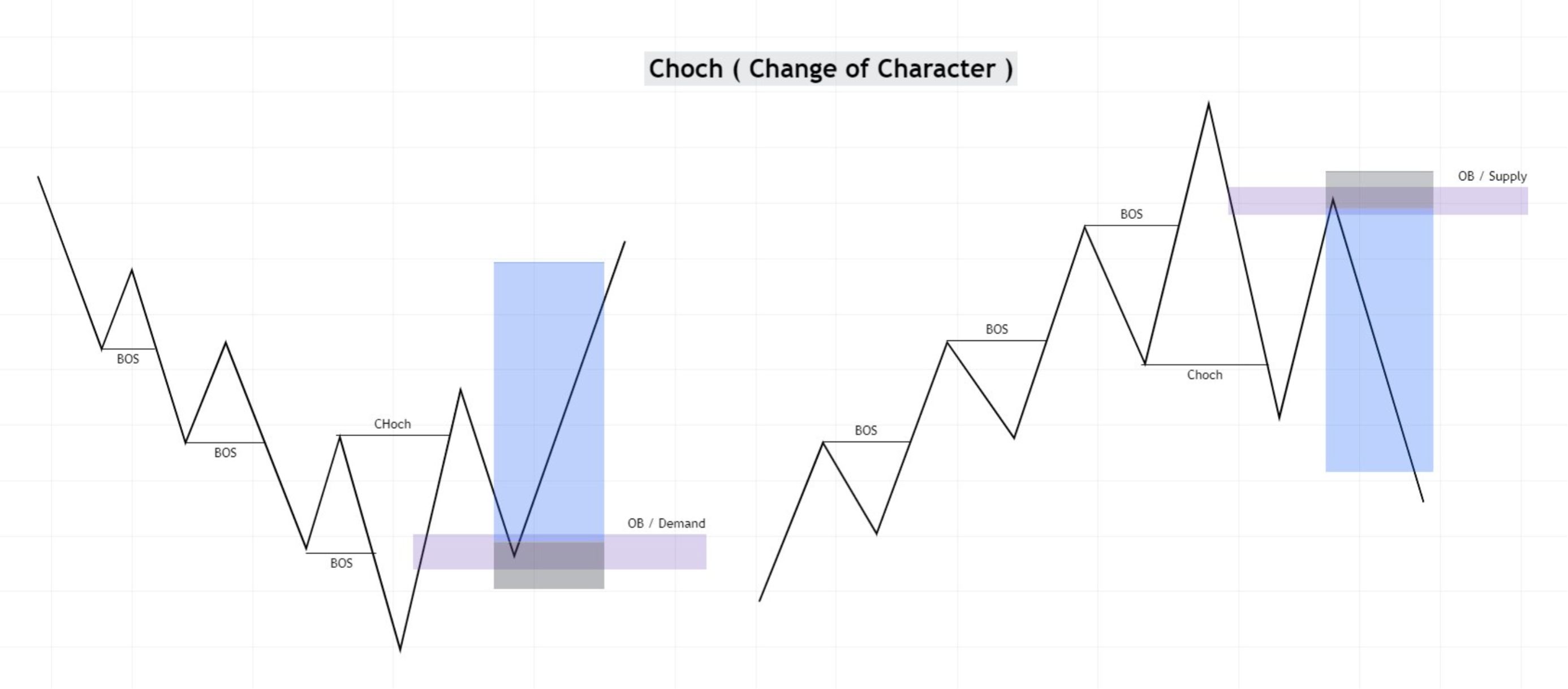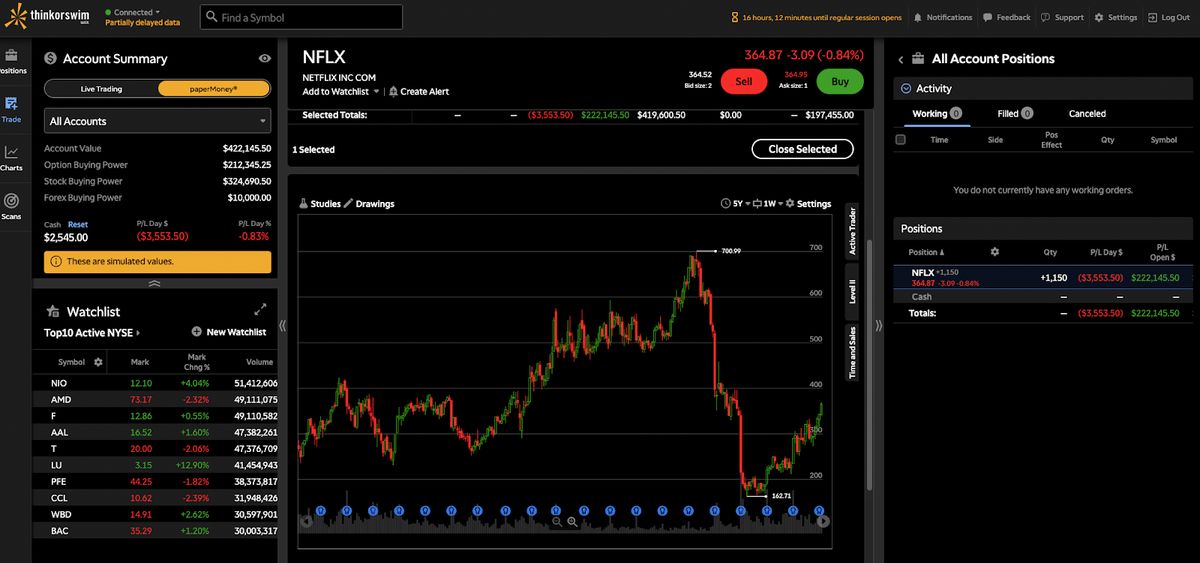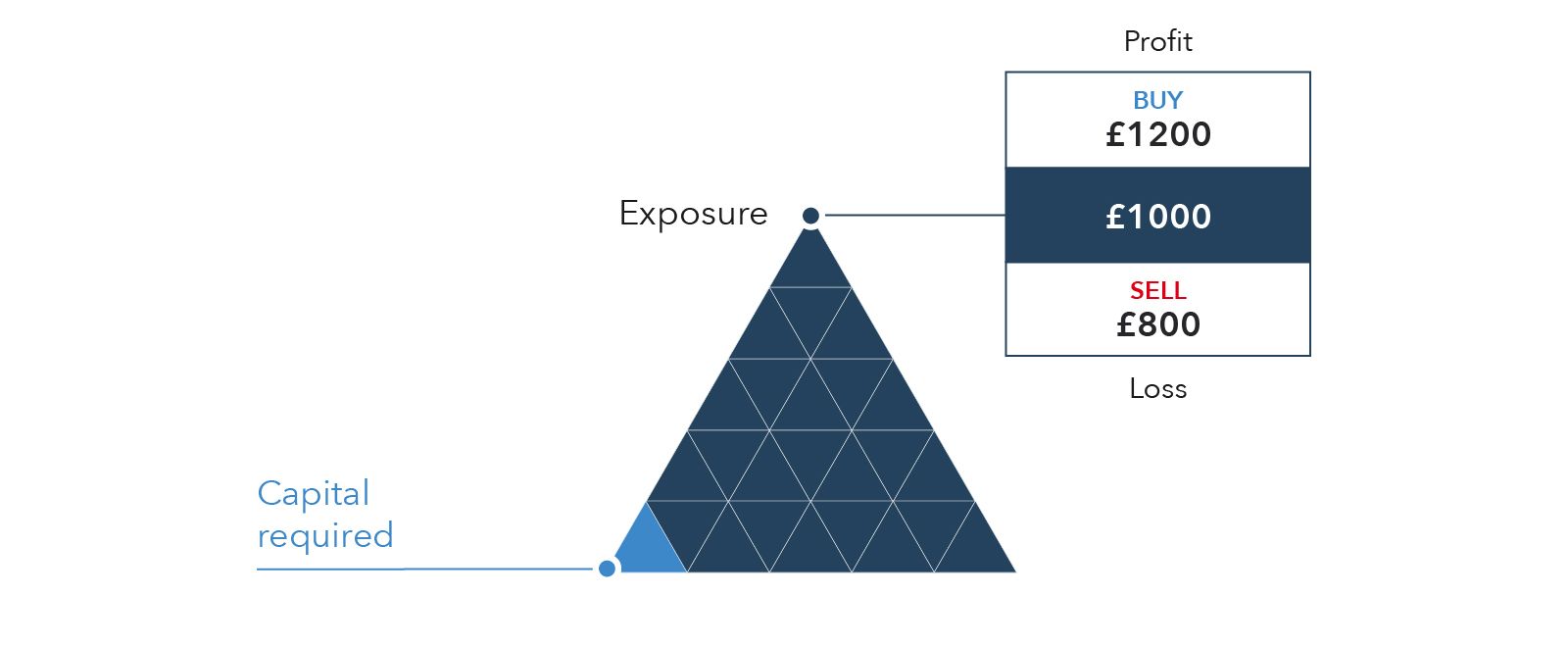Introduction
Welcome to the world of range trading! In the dynamic landscape of financial markets, range trading is a popular strategy used by traders to take advantage of price movements within a specific range. Whether you are a seasoned trader or just starting your journey in the investment world, understanding range trading can provide you with a valuable tool to navigate volatile markets.
Range trading, also known as channel trading or sideways trading, is a technique employed by traders to identify periods in which the price of an asset remains relatively stable between defined support and resistance levels. During these periods, the price bounces between the upper and lower boundaries of the range, creating potential opportunities for traders to buy at the lower end and sell at the higher end.
Unlike trend trading, which relies on identifying and following the direction of a market’s upward or downward movement, range trading focuses on exploiting price fluctuations within a confined range. Traders who employ this strategy aim to profit from buying near the support level and selling near the resistance level, repeatedly taking advantage of the predictable oscillations.
Range trading is particularly suitable for markets that lack clear trends or exhibit sideways movement. These markets often experience periods of consolidation or indecision among market participants, creating an ideal environment for range trading strategies to thrive. By capitalizing on the repetitive nature of price bounces within a defined range, range traders can potentially generate consistent profits, regardless of the overall market direction.
In the following sections, we will delve deeper into range trading and explore its characteristics, the technical indicators used to identify range-bound markets, strategies employed by range traders, and the risks and challenges associated with this trading approach. We will also highlight the key differences between range trading and trend trading, and provide real-world examples to help solidify your understanding of this popular trading strategy.
Definition of Range Trading
Range trading is a trading strategy that aims to profit from the repeated price fluctuations within a defined range or channel. It involves identifying support and resistance levels, and then buying when the price is near the support level and selling when it approaches the resistance level. The primary objective of range trading is to capitalize on the predictable oscillations between the upper and lower boundaries of the range.
The range, also known as the channel, is formed by connecting the highest and lowest points of the price over a specific period. Traders typically draw horizontal lines to represent the upper and lower boundaries of the range. The support level is the lower bound, where buying pressure is expected to increase, while the resistance level is the upper bound, where selling pressure may intensify.
During range-bound periods, the price tends to move horizontally rather than exhibiting a clear upward or downward trend. It bounces between the support and resistance levels, creating a predictable trading range. This behavior is often attributed to market indecision or a lack of fundamental catalysts to drive the price in a particular direction.
Range trading is a versatile strategy that can be applied to various financial markets, including stocks, currencies, commodities, and indices. Traders can employ range trading techniques in both short-term and long-term trading horizons, depending on their preferred timeframes and trading objectives. While it may be particularly effective in ranging markets, range trading can also be employed during consolidation periods within larger trends.
It is important to note that range trading does not aim to predict the future direction of the market but rather seeks to profit from the price oscillations within the defined range, irrespective of the overall market trend. This approach can be especially beneficial in volatile markets or during periods of uncertainty when clear trends are elusive.
In the next sections, we will explore the characteristics of range trading in more detail, including the key elements that define a range-bound market and the technical indicators used to identify and validate trading ranges.
Characteristics of Range Trading
Range trading possesses several defining characteristics that set it apart as a unique trading strategy. Understanding these key characteristics is essential for traders who wish to effectively implement range trading techniques. Let’s explore some of the important features of range trading:
- Defined Range: Range trading focuses on price movements within a specific range or channel. Traders identify and draw support and resistance levels that define the upper and lower boundaries of the range. The range provides a clear framework for executing trades and managing risk.
- Horizontal Price Movement: Unlike trend trading, where the price moves in a distinct upward or downward direction, range trading occurs when the market moves horizontally. The price bounces between the support and resistance levels, forming a predictable pattern of oscillations.
- Repetitive Price Patterns: Range trading thrives on the repetitive nature of price patterns within the defined range. Traders look for opportunities to buy near the support level and sell near the resistance level, taking advantage of the predictable price bounces.
- Consolidation and Indecision: Range-bound markets often occur during consolidation phases or periods of indecision among market participants. Market consolidation is characterized by a lack of clear trends and a narrowing range, presenting range traders with potential trading opportunities.
- Shorter-Term Trading: Range trading is suitable for both short-term and long-term trading horizons, but it is commonly associated with shorter-term strategies. Traders often aim to capture multiple trades within the range rather than holding positions for extended periods.
- Range-Bound Market Cycles: The market moves through different phases, including trending, ranging, and breakout phases. Range trading is most effective during the range-bound phase when the price moves consistently within a defined range. Traders must be able to identify when a market enters or exits a range-bound cycle.
- Volatility Management: Range trading requires careful management of volatility. Traders need to be aware of the potential for false breakouts or sudden price movements outside the range. Effective risk management strategies are vital to navigate these situations.
Understanding these characteristics will enable traders to identify range-bound markets and implement appropriate range trading strategies. In the next section, we will explore how range trading works and the key principles underlying its execution.
How Does Range Trading Work?
Range trading operates on the premise that prices tend to fluctuate within a specific range, providing opportunities for traders to profit from these predictable price oscillations. Let’s dive into the key principles of how range trading works:
1. Identifying the Range: The first step in range trading is identifying and defining the range. Traders draw horizontal lines to mark the upper and lower boundaries of the range, known as the resistance and support levels, respectively. These levels are often determined by identifying significant price points or areas of congestion on the price chart.
2. Buy Low, Sell High: Range traders aim to buy near the support level when the price is at the lower end of the range and sell near the resistance level when the price approaches the upper end of the range. By taking advantage of the predictable price bounces within the range, traders can potentially profit from capturing these price movements.
3. Setting Entry and Exit Points: Traders determine their entry and exit points based on the price levels within the range. They may use various technical indicators or price patterns to confirm potential entry and exit signals. For example, a trader might enter a long position when the price touches or falls near the support level, and exit the trade when the price reaches the resistance level.
4. Managing Stop Losses and Take Profits: Risk management is crucial in range trading. Traders set stop loss orders below the support level to limit potential losses if the price breaks below the range. Likewise, take profit orders are placed near the resistance level to secure profits as the price reaches the upper boundary. Effective risk management ensures that potential losses are controlled and profits are preserved.
5. Monitoring Price Bounces: Range traders closely monitor the price movements within the established range. They observe how the price reacts to the support and resistance levels and look for patterns of reliable bounces. By recognizing repetitive price movements, traders can enhance their ability to time their entries and exits more accurately.
6. Adapting to Changing Market Conditions: Markets are dynamic, and range-bound conditions can evolve. Traders need to adapt their strategies accordingly. If the range tightens or the price shows signs of breaking out, it may be necessary to adjust the range or shift to a different trading approach. Staying flexible and monitoring market conditions is essential for successful range trading.
Range trading can be a profitable strategy when applied correctly. By understanding how prices move within ranges, identifying key support and resistance levels, and effectively executing trades based on these principles, traders can take advantage of predictable price patterns and potentially generate consistent profits in range-bound markets.
Next, we will explore the indicators commonly used in range trading to identify and validate range-bound markets.
Identifying Range-Bound Markets
Identifying range-bound markets is a crucial aspect of range trading. Traders must be able to distinguish periods of consolidation and sideways movement from trending markets. Here are some key indicators and techniques used to identify range-bound markets:
1. Support and Resistance Levels: Range-bound markets are characterized by clearly defined support and resistance levels. These levels represent areas where buying and selling pressures converge, leading to price bounces. Traders can identify range-bound markets by observing the price bouncing between these levels without a clear directional trend.
2. Price Channels: Price channels are graphical representations of the range. They consist of two parallel lines drawn to connect the highs and lows of the price action. In a range-bound market, the price tends to move within the channel, oscillating between the upper and lower boundaries. Traders can visually inspect the price chart to determine the presence of a price channel.
3. Volatility Contraction: Range-bound markets often exhibit a contraction in volatility. This means that the price range narrows, and the price fluctuations become smaller compared to periods of higher volatility. Traders can use technical indicators such as Bollinger Bands or Average True Range (ATR) to measure and monitor volatility levels. Low volatility readings may indicate a potential range-bound market.
4. Volume Analysis: Volume can provide valuable insights into market conditions. In range-bound markets, volume tends to be lower compared to trending markets. Traders can analyze volume patterns to determine if there is a lack of significant buying or selling pressure, which signifies a range-bound environment.
5. Indicators of Momentum Loss: Range-bound markets often exhibit a loss of momentum as neither buyers nor sellers can push the price out of the established range. Traders can use oscillators such as the Relative Strength Index (RSI) or the Moving Average Convergence Divergence (MACD) to identify moments of momentum loss, signaling a range-bound market.
6. Chart Patterns: Certain chart patterns can indicate range-bound markets. Common patterns include rectangles, symmetrical triangles, or sideways channels. Traders can look for these patterns as they suggest that the price is moving within a defined range.
It is important to note that range-bound market conditions may not persist indefinitely. Traders must remain vigilant and ready to adapt their strategies when the market transitions into a trending or breakout phase. Regularly monitoring market conditions and using a combination of technical analysis tools can help to identify and confirm range-bound markets for effective range trading.
In the next section, we will explore the technical indicators commonly used by range traders to validate range-bound markets and generate entry and exit signals.
Technical Indicators for Range Trading
Technical indicators play a vital role in range trading, helping traders validate range-bound markets and generate entry and exit signals. These indicators provide valuable insights into price dynamics and can assist in making more informed trading decisions. Here are some commonly used technical indicators for range trading:
1. Bollinger Bands: Bollinger Bands consist of three lines: a middle band representing the moving average, and an upper and lower band that measure volatility. In range-bound markets, the price often stays within the upper and lower bands. Traders can look for price bounces or reversals near the outer bands as potential entry and exit points.
2. Relative Strength Index (RSI): The RSI is a momentum oscillator that measures the speed and change of price movements. In range-bound markets, the RSI tends to oscillate between 30 and 70, indicating neither overbought nor oversold conditions. Traders can use RSI divergences or overbought/oversold signals to identify potential entry and exit points.
3. Moving Average Convergence Divergence (MACD): The MACD is a trend-following momentum indicator that helps identify changes in trend and potential reversals. In range-bound markets, the MACD line and signal line may converge, indicating a lack of directional momentum. Traders can use MACD crossovers or trigger line breakouts to generate entry and exit signals.
4. Stochastic Oscillator: The Stochastic Oscillator is a momentum indicator that compares the current closing price to its price range over a specific period. In range-bound markets, the Stochastic Oscillator often exhibits choppy movements between the overbought and oversold levels, signaling potential turning points near these extremes. Traders can use Stochastic Oscillator crossovers or divergences to identify entry and exit opportunities.
5. Volume-Based Indicators: Volume-based indicators, such as the On-Balance Volume (OBV) or Volume Weighted Average Price (VWAP), can provide insights into market participation and potential distribution or accumulation. In range-bound markets, relatively lower volume readings can confirm the absence of strong buying or selling pressure. Traders can use volume-based indicators in conjunction with other range trading techniques to validate trading opportunities.
6. Support and Resistance Levels: While not strictly indicators, support and resistance levels are crucial tools for range traders. These levels can act as barriers that the price bounces off within a range-bound market. Traders can use support and resistance levels to determine potential entry and exit points, as well as measure the strength or weakness of the range.
It’s important to remember that no single indicator can guarantee profitable trades. Range traders often use a combination of indicators and technical analysis tools to validate range-bound markets and generate accurate signals. Understanding how these indicators work and their limitations is paramount for effective range trading.
In the next section, we will explore various strategies that range traders employ to maximize their profits within the defined range.
Strategies for Range Trading
Range trading offers a range of strategies that traders can employ to effectively capitalize on price movements within a defined range. These strategies aim to maximize profits by identifying optimal entry and exit points. Let’s explore some popular strategies used by range traders:
- Range Breakout Strategy: This strategy involves waiting for a potential breakout of the range. Traders monitor the price action and volume to identify signs of a breakout above the resistance level or below the support level. Once a breakout occurs, traders enter a position in the direction of the breakout, anticipating a continuation of the trend.
- Support and Resistance Bounce Strategy: Traders using this strategy look for opportunities to enter trades near the support or resistance level. They aim to buy near the support level and sell near the resistance level, capitalizing on the predictable price bounces within the range. Confirmation from technical indicators, such as oversold or overbought readings, can enhance the effectiveness of this strategy.
- Range Reversal Strategy: In this strategy, traders anticipate reversals within the range. They monitor price patterns, candlestick formations, or divergences in momentum indicators to identify potential reversal points near the boundaries of the range. Traders aim to enter positions when the price reverses from the support or resistance level and rides the reversal back toward the opposite boundary.
- Range Expansion Strategy: Range expansion strategies involve taking advantage of periods of low volatility within the range. Traders monitor volatility indicators or chart patterns to identify potential breakouts or sharp price movements. When volatility expands, traders enter positions in the direction of the breakout, seeking to profit from the increased momentum and trend.
- Range Scalping Strategy: Range scalping is a short-term strategy that focuses on capturing small price movements within the range. Traders enter and exit positions frequently, aiming to profit from multiple small gains as the price bounces between support and resistance levels. This strategy requires quick decision-making and effective risk management.
It’s important for range traders to align their chosen strategy with their risk tolerance, trading style, and market conditions. Additionally, implementing proper risk management techniques, such as setting stop loss orders and profit targets, is crucial to protect capital and manage potential losses.
Combining different strategies or adapting them to suit changing market conditions can also be advantageous. Traders should continuously evaluate and adjust their approach based on the evolving dynamics of the range-bound market.
Remember, consistency, patience, and discipline are key when implementing range trading strategies. It may take time to master these strategies and develop a keen sense of timing and execution. Regular practice, observation of price action, and continuous learning will enhance one’s proficiency in range trading.
In the next section, we will discuss the risks and challenges associated with range trading, enabling traders to be better prepared and make informed decisions.
Risks and Challenges of Range Trading
While range trading can be a profitable trading strategy, it is not without its risks and challenges. Traders must be aware of these potential pitfalls to mitigate losses and improve their chances of success. Let’s explore some of the risks and challenges associated with range trading:
1. False Breakouts: Range-bound markets can experience false breakouts, where the price temporarily breaches the support or resistance level but quickly reverses back into the range. Traders must be cautious of false signals and use additional confirmation from technical indicators or price action to validate breakouts.
2. Whipsaw Price Movements: Within a range-bound market, price movements can be volatile and unpredictable. Traders may encounter whipsaw movements, where the price quickly moves in one direction, triggering stop losses before reversing back into the range. It’s crucial to set appropriate stop loss orders and be prepared for rapid price fluctuations.
3. Market Transitions: Range-bound markets are not permanent, and periods of consolidation can transition into trending or breakout phases. Traders must be able to identify when a range-bound market is losing its validity and adjust their strategies accordingly. Failure to adapt to changing market conditions can result in missed opportunities or losses.
4. Delayed Breakouts: Breakouts from a range may not always occur immediately. Traders must be patient and wait for confirmatory price action before entering positions. Premature entries can lead to losses if the breakout fails to materialize or reverses quickly back into the range.
5. Market Manipulation: In some instances, market participants may attempt to manipulate prices within a range. Traders should be cautious of sudden price spikes or unusual volume patterns that may indicate manipulation. It’s essential to rely on a combination of technical analysis and market knowledge to distinguish genuine range-bound conditions from manipulative actions.
6. Overtrading: The repetitive nature of range trading may tempt traders to take excessive trades within the range. Overtrading can lead to increased transaction costs and can be mentally and emotionally exhausting. Traders should exercise discipline and stick to their trading plan to avoid succumbing to the temptation of overtrading.
Managing these risks and challenges requires traders to develop a solid risk management plan. This includes setting appropriate stop loss orders, determining position sizes based on risk tolerance, and maintaining a disciplined approach to trade execution. Continual monitoring of market conditions and regular evaluation of trading strategies is also crucial to adapt to changing dynamics.
Range trading can be a profitable strategy when executed with care and precision. It offers opportunities to capture price movements within a defined range, but traders must remain vigilant and adaptable in the face of potential risks and challenges present in range-bound markets.
In the next section, we will compare range trading with trend trading to highlight the key differences between these two popular trading approaches.
Range Trading vs. Trend Trading
Range trading and trend trading are two common approaches utilized by traders in the financial markets. While both strategies aim to generate profits, they differ significantly in their underlying principles and execution. Here’s a comparison between range trading and trend trading:
Definition: Range trading focuses on exploiting price movements within a defined range, while trend trading seeks to profit from sustained price movements in a particular direction.
Market Conditions: Range trading is suitable for range-bound or sideways markets, where the price moves horizontally between defined support and resistance levels. In contrast, trend trading thrives in trending markets, where the price exhibits a clear upward or downward trajectory.
Market Analysis: Range trading relies heavily on technical analysis to identify and validate ranges, along with indicators signaling support and resistance levels. Trend trading incorporates technical, fundamental, and sentiment analysis to identify the direction of a trend and potential entry and exit points.
Profit Potential: Range trading aims to capitalize on short-term price fluctuations within the defined range, generating multiple smaller gains. On the other hand, trend trading focuses on capturing larger price movements that can result in substantial profits during sustained trends.
Risk Management: Range trading often involves smaller stop loss orders as traders aim to limit potential losses within the range. Trend trading can involve wider stop loss orders to allow for market noise and volatility within the prevailing trend.
Time Horizon: Range trading is commonly associated with shorter timeframes, such as intraday or swing trading. Traders may enter and exit positions within a few hours or days. Trend trading can span longer timeframes, ranging from days to months or even years, as traders aim to ride the trend until it shows signs of exhaustion.
Psychological Considerations: Range trading requires patience and discipline to wait for price bounces within the range, while trend trading requires staying in a trade for extended periods and managing emotions during pullbacks and counter-trend moves.
Both range trading and trend trading have their advantages and suit different market conditions and trading preferences. Range trading can be beneficial in consolidating markets, providing opportunities for frequent trades and potentially generating consistent profits. Trend trading can offer substantial gains during strong trends but requires a longer-term commitment and tolerance for larger drawdowns.
It’s essential for traders to understand the characteristics of their chosen strategy and the conditions in which it performs best. Some traders may combine elements of both approaches, adjusting their strategies based on market conditions and employing a range trading strategy during range-bound periods within a larger trend.
In the following section, we will provide real-world examples of range trading to illustrate its application and potential profitability.
Range Trading Examples
Real-world examples can provide valuable insights into the application and potential profitability of range trading. Let’s explore a couple of scenarios where range trading strategies could have been implemented effectively:
Example 1: Stock XYZ
Stock XYZ has been trading within a range of $50 to $60 for the past few months. Traders who identify this range can implement a range trading strategy. They would look to enter trades near the support level at $50 and exit near the resistance level at $60.
By buying near $50 and selling near $60, these traders can capture the price oscillations within the range. They would continuously monitor the price action, waiting for the price to bounce off the support or resistance level before taking action.
Traders could employ technical indicators, such as Bollinger Bands or the RSI, to validate the range and identify potential entry and exit points. Managing risk would involve setting stop loss orders below the support level and taking profit near the resistance level.
Example 2: Forex Pair USD/EUR
The exchange rate between the US dollar (USD) and the euro (EUR) has been moving within a range of 1.10 to 1.20 over the past few weeks. Traders observing this range can employ range trading strategies in the forex market.
They would aim to buy the USD near the lower end of the range, around 1.10, and sell near the upper end, around 1.20. Traders would closely monitor price bounces at these levels and use technical indicators, such as the Stochastic Oscillator or MACD, to confirm potential entry and exit signals.
Traders utilizing range trading strategies in the forex market would carefully manage risk by setting stop loss orders below the support level and taking profit near the resistance level. They would also consider factors such as economic data releases or central bank announcements that could potentially break the range and adjust their strategies accordingly.
These examples demonstrate how range trading strategies can be applied to various financial instruments, including stocks, currencies, and other assets. Traders follow the basic principles of buying near support and selling near resistance within the established range, while incorporating technical analysis tools to validate entry and exit signals.
It’s important to note that specific market conditions, such as volatility, liquidity, and market sentiment, will influence the effectiveness of range trading strategies. Traders should adapt their approach to the nuances of each market and exercise discretion when selecting their trades.
Continue to gain experience and refine your range trading skills by studying historical price charts, analyzing real-time data, and keeping up with market news and developments. This continuous learning process will ultimately enhance your ability to identify profitable range trading opportunities.
In the concluding section, we will summarize the key points discussed throughout this article and reiterate the value of range trading in the financial markets.
Conclusion
Range trading is a popular and effective strategy for capitalizing on price movements within a defined range. By identifying support and resistance levels, range traders aim to buy near the lower boundary and sell near the upper boundary of the range. This strategy relies on the repetitive nature of price oscillations within the range, providing opportunities for consistent profits.
Throughout this article, we have explored the definition and characteristics of range trading, as well as the techniques used to identify range-bound markets. We have discussed various technical indicators and strategies commonly employed by range traders. Additionally, we have highlighted the risks and challenges inherent in range trading, emphasizing the importance of risk management and flexibility in adapting to changing market conditions.
Range trading offers traders the flexibility to operate within different timeframes and various financial markets, including stocks, currencies, commodities, and indices. It can be particularly advantageous during periods of market consolidation or when trends are absent.
Implementing range trading successfully requires a combination of technical analysis skills, risk management techniques, and patience. Traders must sharpen their ability to identify range-bound markets, time their entries and exits accurately, and adjust their strategies as needed.
Remember, range trading is just one of many approaches in the ever-evolving landscape of trading strategies. It is important to continuously expand your knowledge, refine your skills, and adapt your strategies to different market conditions.
By understanding the principles and nuances of range trading, you can enhance your trading capabilities and potentially achieve consistent profits in range-bound markets. So, embrace the opportunities that range trading presents and embark on your journey to become a skilled range trader.







